Papers by Ramon Lopez De Mantaras
como secretaria. Todos los componentes del GTM colaboran de forma desinteresada con el Ministerio... more como secretaria. Todos los componentes del GTM colaboran de forma desinteresada con el Ministerio de Ciencia e Innovación.
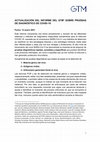
Este informe comprende una breve actualización y revisión de los diferentes sistemas y métodos de... more Este informe comprende una breve actualización y revisión de los diferentes sistemas y métodos de diagnóstico disponibles actualmente para la infección COVID-19, causada por el coronavirus SARS-CoV-2. Los métodos de detección se clasifican en dos estrategias directas y una estrategia indirecta, todas ellas bien diferenciadas y cada una con sus ventajas y limitaciones. El alto nivel de transmisión del virus SARS-CoV-2 ha demostrado la importancia de disponer de pruebas diagnósticas rápidas, sensibles y específicas que puedan identificar a las personas infectadas, así como a aquellas que ya han sufrido la infección y han generado protección inmunitaria. Actualmente las pruebas diagnósticas que existen se basan en la detección de: 1.-Material génico del virus 2.-Antígenos virales 3.-Anticuerpos generados frente al virus Las técnicas PCR y las de detección de material génico y antígenos virales, respectivamente, están muy bien establecidas, presentan una gran especificidad y sensibilidad, y permiten saber si hay presencia de estos elementos del virus en un momento concreto, aunque no indican en qué momento de la infección nos hallamos. Por otro lado, la generación de anticuerpos por parte del sistema inmunitario es una respuesta conocida que sigue una secuencia temporal y ayuda a identificar el momento del proceso infeccioso en que se encuentra el paciente. También, permite la identificación de individuos que han sido huésped del virus, inclusive cuando estos han sido asintomáticos durante la infección. 1 El Grupo de Trabajo Multidisciplinar (GTM) asesora y apoya al Ministerio de Ciencia e Innovación en materias científicas relacionadas con el COVID-19 y sus consecuencias futuras.
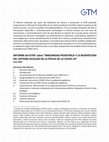
El informe solicitado por parte del Ministerio de Ciencia e Innovación al GTM pretende proporcion... more El informe solicitado por parte del Ministerio de Ciencia e Innovación al GTM pretende proporcionar la información disponible con la máxima evidencia científica sobre la reapertura del sistema escolar, así como la posible inmunidad pediátrica. Tras un estudio exhaustivo de toda la información disponible y suficientemente contrastada, el informe finaliza con una serie de conclusiones y recomendaciones entre las que destaca la creación de un grupo asesor nacional compuesto por personal investigador y/o profesionales en educación, salud pública, pediatría e inmunología para revisar periódicamente el estado de la ciencia y proporcionar actualizaciones coherentes sobre temas clave, que lleven a una mejora de la eficacia de las medidas establecidas. Asimismo, se proporcionan propuestas de investigaciones asociadas con la inmunidad pediátrica, la reapertura segura del sistema escolar y una mejor preparación ante posibles futuros brotes de la pandemia por SARS-CoV-2. INFORME del GTM 1 sobre "INMUNIDAD PEDIÁTRICA Y LA REAPERTURA DEL SISTEMA ESCOLAR EN LA ÉPOCA DE LA COVID-19" Julio 2020 Estructura del Informe: 1. Resumen Ejecutivo 2. Introducción 3. Características de la infección pediátrica por SARS-CoV-2 3.1. Riesgo pediátrico a la infección por SARS-Cov-2. 3.2. Evolución clínica de la COVID-19 en la población pediátrica 3.3. Transmisión de la COVID-19 por la población pediátrica 4. Características diferenciales en la respuesta protectora frente al coronavirus observada en menores comparada con la de personas adultas. Respuesta inmune y base biológica. 4.1. Factores inmunológicos. 4.2. Factores intrínsecos 4.3. Factores externos 5. Reiniciación del sistema escolar en la época del COVID-19
Inteligencia Artificial y Robótica: De la ficción a la realidad
arXiv (Cornell University), Feb 2, 2011
This paper addresses object perception applied to mobile robotics. Being able to perceive semanti... more This paper addresses object perception applied to mobile robotics. Being able to perceive semantically meaningful objects in unstructured environments is a key capability in order to make robots suitable to perform high-level tasks in home environments. However, finding a solution for this task is daunting: it requires the ability to handle the variability in image formation in a moving camera with tight time constraints. The paper brings to attention some of the issues with applying three state of the art object recognition and detection methods in a mobile robotics scenario, and proposes methods to deal with windowing/segmentation. Thus, this work aims at evaluating the state-of-the-art in object perception in an attempt to develop a lightweight solution for mobile robotics use/research in typical indoor settings.
Edicions de la Universitat de Barcelona eBooks, 2020
Aquest document està subjecte a la llicència de Reconeixement-NoComercial-SenseObraDerivada de Cr... more Aquest document està subjecte a la llicència de Reconeixement-NoComercial-SenseObraDerivada de Creative Com mons, el text de la qual està disponible a: http://creative commons.org/licenses/by-ncnd/4.0/.
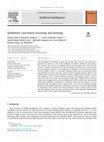
Artificial Intelligence, 2020
The development of autonomous agents that perform tasks with the same dexterity as performed by h... more The development of autonomous agents that perform tasks with the same dexterity as performed by humans is one of the challenges of artificial intelligence and robotics. This motivates the research on intelligent agents, since the agent must choose the best action in a dynamic environment in order to maximise the final score. In this context, the present paper introduces a novel algorithm for Qualitative Case-Based Reasoning and Learning (QCBRL), which is a case-based reasoning system that uses qualitative spatial representations to retrieve and reuse cases by means of relations between objects in the environment. Combined with reinforcement learning, QCBRL allows the agent to learn new qualitative cases at runtime, without assuming a pre-processing step. In order to avoid cases that do not lead to the maximum performance, QCBRL executes case-base maintenance, excluding these cases and obtaining new (more suitable) ones. Experimental evaluation of QCBRL was conducted in a simulated robot-soccer environment, in a real humanoid-robot environment and on simple tasks in two distinct gridworld domains. Results show that QCBRL outperforms traditional RL methods. As a result of running QCBRL in autonomous soccer matches, the robots performed a higher average number of goals than those obtained when using pure numerical models. In the gridworlds considered, the agent was able to learn optimal and safety policies.
Una aproximación biográfica e histórica a la inteligencia artificial
Abaco: Revista de cultura y ciencias sociales, 2020
En este texto llevo a cabo, en primer lugar, resumen de mi propia trayectoria profesional y, en s... more En este texto llevo a cabo, en primer lugar, resumen de mi propia trayectoria profesional y, en segundo lugar, un breve repaso del campo de la Inteligencia Artificial (IA). Lo primero lo realizo no por vanidad, sino para que el lector pueda calibrar con propiedad quién y desde dónde se realiza lo segundo, además de porque constituye un ejemplo concreto de lo que es y lo que hace un investigador en Inteligencia Artificial y porque modestamente forma parte del desarrollo de la Inteligencia Artificial en España
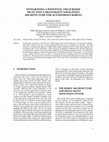
In this paper we present a new Pilot for a Multi-Agent based control architecture for Autonomous ... more In this paper we present a new Pilot for a Multi-Agent based control architecture for Autonomous Robots. This Pilot is based on the use of virtual potential fields and is easy to implement yet effective. The Pilot functions as an autonomous agent in a complex Multi-Agent Architecture for the control and navigation of an autonomous robot. In this architecture, various agents are responsible for different tasks, and they might have to compete and cooperate for the successful completion of a particular navigation mission. The interaction between different agents is achieved through the use of a bidding mechanism. In this respect, we also present a way to define the bid for the new pilot, so that the pilot can be integrated easily into the Multi-Agent Architecture. The pilot has been tested both on simulations and navigation experiments involving a real robot and it has given successful and encouraging results. We also deal with some problems of this pilot and ways to get around them.
Towards artificial creativity : Examples of some applications of AI to music performance
... Towards Artificial Creativity: Examples of some applications of AI to music performance Ramón... more ... Towards Artificial Creativity: Examples of some applications of AI to music performance Ramón LOPEZ DE MANTARAS IIIA, Artificial Intelligence Research Institute CSIC ... & Rowe [4], and Bentley & Corne [5]; as well as the papers by Rowe & Partridge [6], and Buchanan [7]. Hay ...
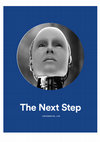
(EurAI). He serves on a variety of panels and advisory committees for public and private institut... more (EurAI). He serves on a variety of panels and advisory committees for public and private institutions based in the USA and Europe. MORE ABOUT THE AUTHOR + Opening image: Martial Raysse America, America (1964) Neon, painted metal 2.4 × 1.65 × 0.45 m Centre Pompidou-Musée national d'art moderne-Centre de création industrielle, Paris, France. Ramón López de Mántaras Arti cial Intelligence and the Arts: Toward Computational Creativity With this understanding in mind, an operational, and widely accepted, definition of creativity is: "A creative idea is a novel and valuable combination of known ideas." In other words, physical laws, theorems, musical pieces can be generated from a finite set of existing elements and, therefore, creativity is an advanced form of problem solving that involves memory, analogy, learning, and reasoning under constraints, among others, and is therefore possible to replicate by means of computers. This article addresses the question of the possibility of achieving computational creativity through some examples of computer programs capable of replicating some aspects of creative behavior. Due to space limitations we could not include other interesting areas of application such as: storytelling (Gervás, 2009), poetry (Montfort et al., 2014), science (Langley et al., 1987), or even humor (Ritchie, 2009). Therefore, the paper addresses, with different levels of detail, representative results of some achievements in the fields of music and visual arts. The reason for focusing on these artistic fields is that they are by far the ones in which there is more activity and where the results obtained are most impressive. The paper ends with some reflections on the recent trend of democratization of creativity by means of assisting and augmenting human creativity. For further reading regarding computational creativity in general, I recommend the AI Magazine special issue on Computational Creativity (Colton et al., 2009), as well as the books
Revista De Occidente, 2015
ATI es miembro fundador de CEPIS (Council of European Professional Informatics Societies), repres... more ATI es miembro fundador de CEPIS (Council of European Professional Informatics Societies), representa a España en IFIP (International Federation for Information Processing) y es miembro de CLEI (Centro Latinoamericano de Estudios de Informática) y de CECUA (Confederation of European Computer User Associations). Asimismo tiene un acuerdo de colaboración con ACM (Association for Computing Machinery) y colabora con diversas asociaciones informáticas españolas.
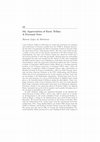
Studies in fuzziness and soft computing, 2015
I met Professor Trillas in 1976 when he visited the Laboratory for Analysis and Architecture of S... more I met Professor Trillas in 1976 when he visited the Laboratory for Analysis and Architecture of Systems (LAAS) from the CNRS in Toulouse (France). At that time I was pursuing my PhD in Automatic Control at that lab under the supervision of Prof. Josep Aguilar-Martin. His visit to the LAAS was just a couple of years after he had become interested in the field of Fuzzy Sets. Coincidentally, the same year Professor Zadeh also visited the LAAS and I also had the privilege to meet him personally. Meeting these two outstanding personalities the same year changed my life. Indeed, in 1977, after completing my PhD I had the chance to go to Berkeley to study Fuzzy Systems and Artificial Intelligence under the supervision of Professor Zadeh and, after returning to Spain, in September 1980 Professor Trillas offered me a teaching assistant position at the Technical University of Catalonia (UPC) where, under his supervision, I completed a PhD in Computer Science with a dissertation on Machine Learning for Pattern Classification. After my PhD I became Assistant and then Associate Professor at the UPC collaborating with Professor Trillas and actively participating in the weekly seminars on Fuzzy Logic that he was leading at the Mathematics department. During those years, he was also the main promoter of a series of Fall Seminars on Applied Logic taking place at the beautiful island of Mallorca during the mid eighties. I have very happy memories of this series of seminars where the, then very small, Spanish Fuzzy Logic community would gather with many of our European colleagues. Nowadays, thanks to the pioneering efforts of Professor Trillas, the Spanish Fuzzy community has grown both in quantity and in quality becoming one of the top fuzzy communities in the world.











Uploads
Papers by Ramon Lopez De Mantaras